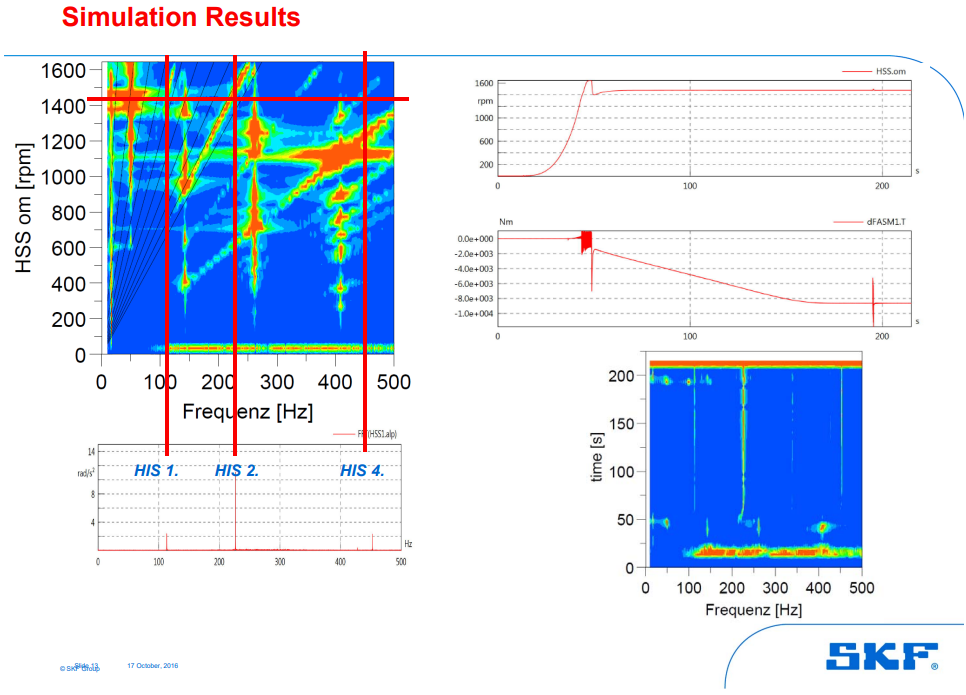Additional Loads in the Mechanical Drivetrain of Wind Turbines Caused by Electrical Grid Deviations
- XPI

- May 17, 2024
- 2 min read
SimulationX Customer Story
Summary of Presentation from the 2016 ESI SimulationX User Forum
Conference Presentation by Werner Horn and Katrin Peter, SKF GmbH
SKF, a company focused on producing bearings and seals that reduce rotational friction, applied SimulationX to study how electrical grid deviations affect load on the bearings in the mechanical drivetrain of wind turbines. The study showed that a power grid overvoltage of 2kV produces a short-term mechanical load that causes acceleration peaks within the bearings and a loss of sliding power at the bearing raceways.
The wind turbine design investigated by SKF consists of a rotor shaft, 3-stage gearbox, high-speed coupling shaft, and electrical generator. While the rotor shaft and initial planetary stage of the gearbox have a low frequency dynamic caused by wind, blade vibration, or tower shadow, the coupling shaft and later stages of the gearbox experience high frequency dynamics associated with gear engagement excitation and reaction to grid events.

To improve the design of their bearings, SKF sought to better understand how the bearings in the drivetrain are impacted by the high frequency dynamics associated with specific power grid events. A single SimulationX model was created which integrated both the mechanical and electrical systems and their interactions. The model included torque input, pitch control, gearbox, coupling shaft, and brake control systems of the mechanical drivetrain, as well as the speed and torque control, electrical generator, protection crowbar, protection chopper and grid filter, converter, and transformer grid connection used to transfer power from the stator to the electrical grid.


Load information was collected from the inertial and rotational spring-damper elements used to model the high-speed gearbox output shaft (HSS) that interfaces with the bearings under study. Multiple permissible power grid events such as fast and slow voltage change, temporary overvoltage, frequency deviation, and asymmetric loading were simulated, and an order analysis and FFT of the system were performed.
[Results for assymetric loading until 70% RMS]
For a power grid overvoltage of 2kV, the torque on the rotor and high-speed shaft drops increasing the speed of the high-speed shaft.
Using SKF’s bearing modeling software (BEAST), SKF identified the internal motions and forces in the high-speed shaft’s bearings when the torque and velocity loading data from the SimulationX model were applied. As the torque load on the shaft drops, the force on the rolling elements of the upstream bearing side increases. Similarly, as the load returns the force on the downstream side of the bearing increases.

From the study, SKF concluded they must consider grid-side events when dimensioning wind power plant bearings. With the knowledge gained in this study SKF plans to adjust their bearing design to perform more optimally under these operating conditions and improve the turbine’s electrical system to better handle temporary power grid overvoltage.
If interested in additional information, please contact us for the full proceedings of the 2016 ESI SimulationX User Forum.






Comments